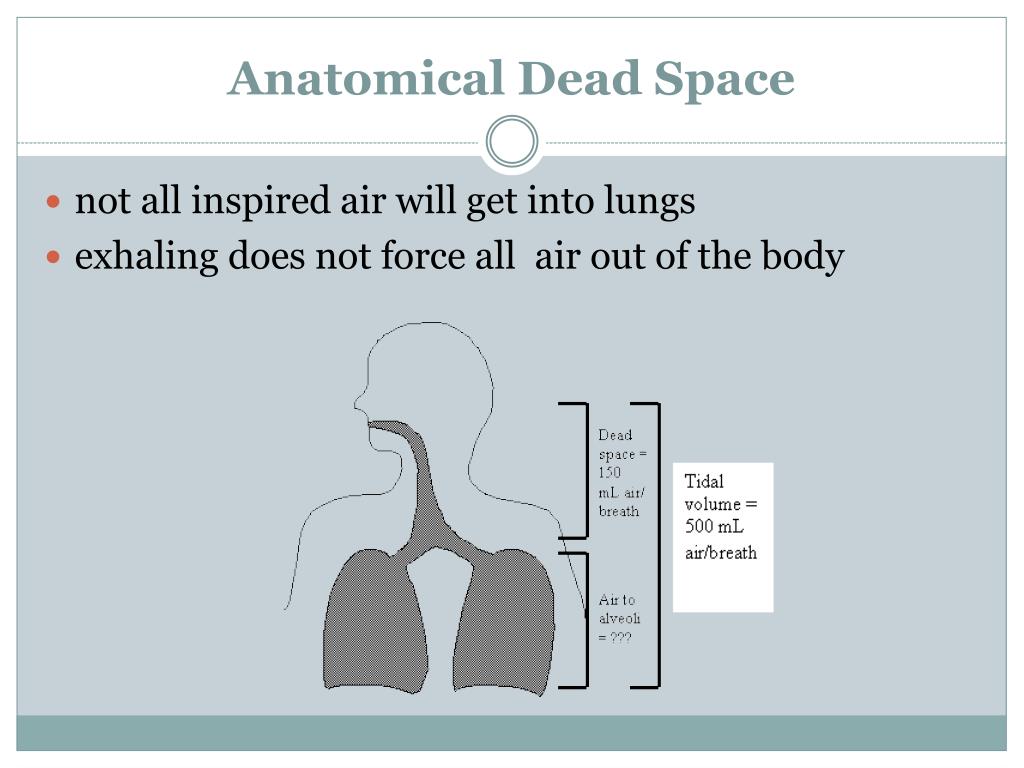

The Bohr equation can be used to calculate the amount of dead space in a lung. One can see an increase in the value of physiologic dead space in lung disease states where the diffusion membrane of alveoli does not function properly or when there are ventilation/perfusion mismatch defects. Therefore, physiologic dead space is equivalent to anatomical. In a healthy adult, alveolar dead space can be considered negligible. The respiratory zone is comprised of respiratory bronchioles, alveolar duct, alveolar sac, and alveoli.

Physiologic or total dead space is equal to anatomic plus alveolar dead space which is the volume of air in the respiratory zone that does not take part in gas exchange. This volume is considered to be 30% of normal tidal volume (500 mL) therefore, the value of anatomic dead space is 150 mL. Anatomical dead space is represented by the volume of air that fills the conducting zone of respiration made up by the nose, trachea, and bronchi. The two types of dead space are anatomical dead space and physiologic dead space. Acid-base equilibrium.Dead space represents the volume of ventilated air that does not participate in gas exchange. Gas transport in blood: oxygen and carbon dioxide. Breathing at high altitude: maximal altitude attainable by humans. Resistances to diffusion: gas-gas, through tissues from air to hemoglobin, limited velocity to hemoglobin oxygenation and backpressure.

Diffusion of gases: derivation of the first Fick’s law. Graphic and arithmetic representation of the respiratory work: optimal breathing frequency. Maximal expiratory and inspiratory pressures. Pressure-volume diagram of the combined system lungs-chest wall: the relaxation curve. Pressure-volume diagram of living lung: area-surface tension diagram. Measurement of lung volumes: spirometers of Benedict, Tissot and body plethysmograph. Effect of air motion and lung volume on the airway size. Dynamics of respiration: laminar and turbulent flow. The Law of Dalton: partial pressure of each component in a gas mixture. Consequences of the bidirectional flow of air within lung structures: dead space definition, composition of ambient air, exhaled air and alveolar air.


 0 kommentar(er)
0 kommentar(er)
